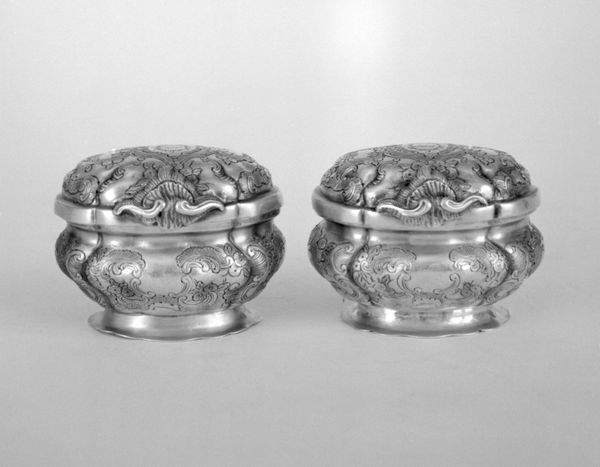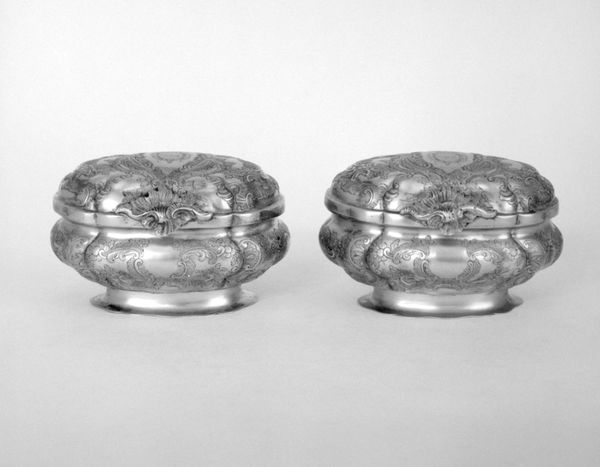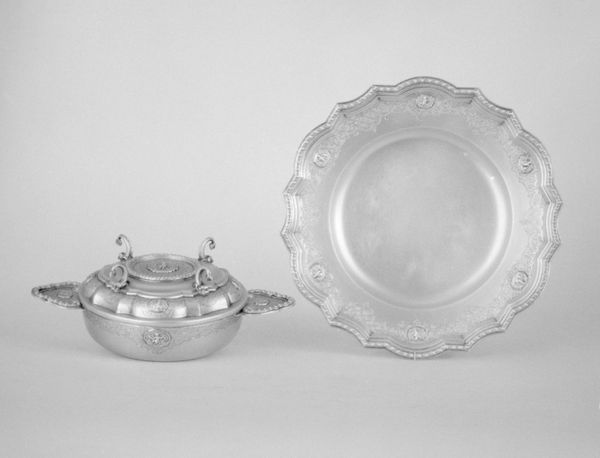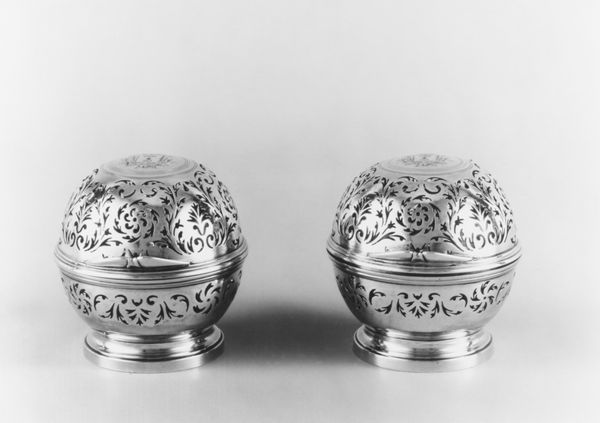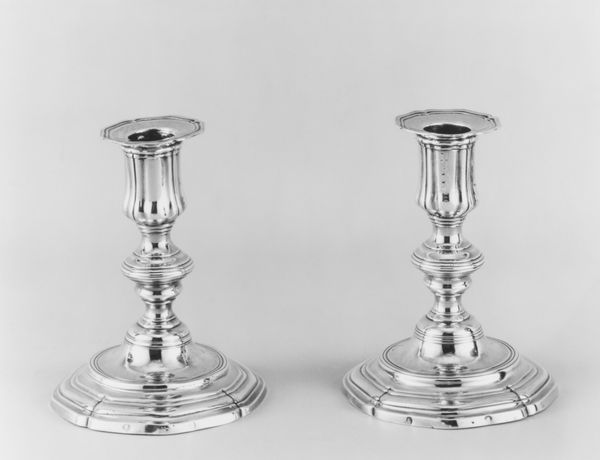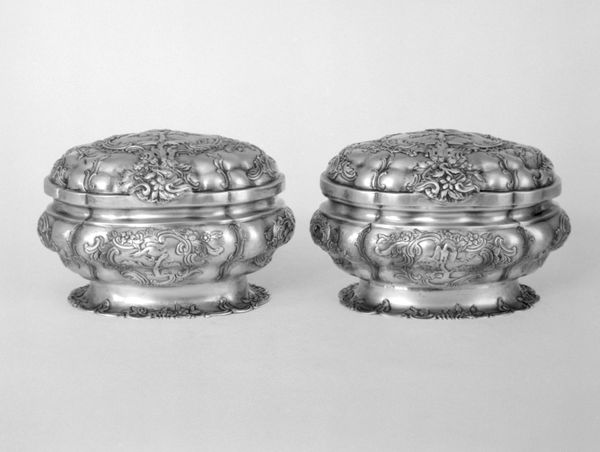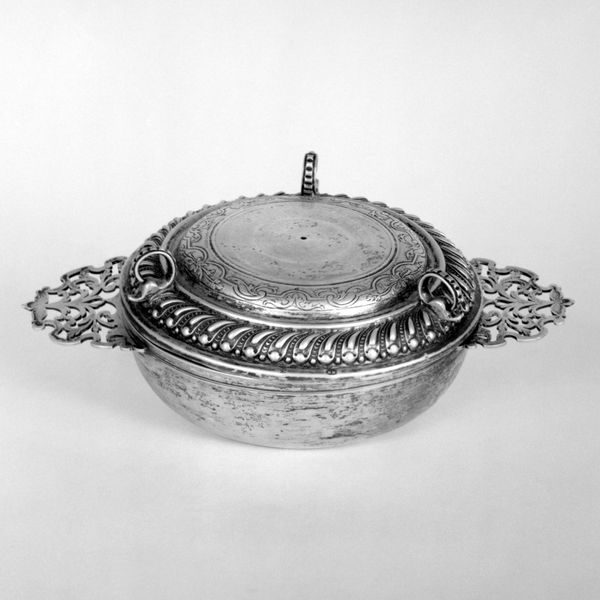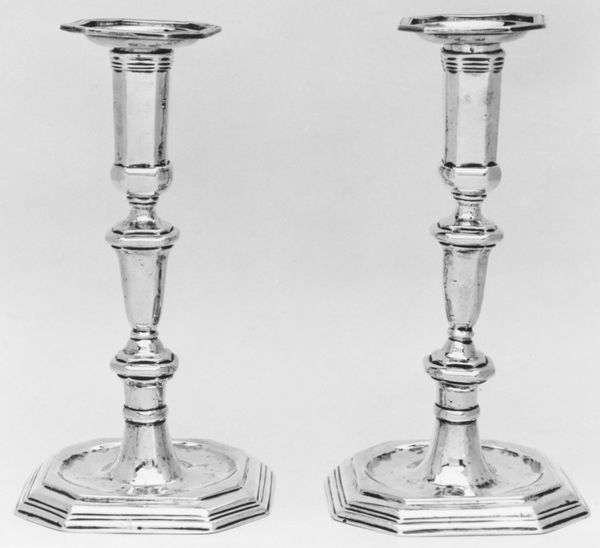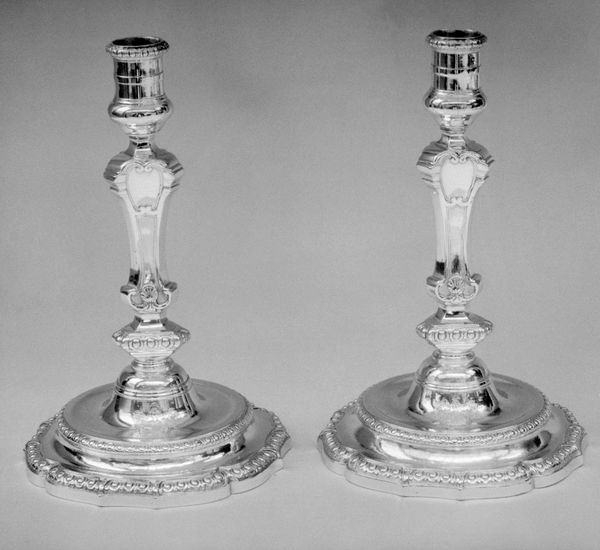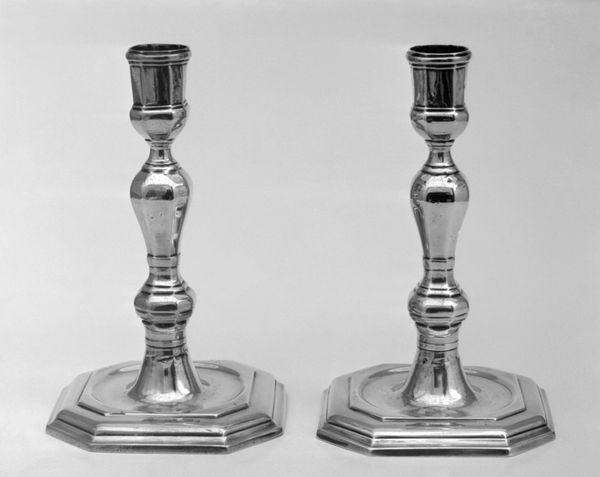
Small écuelle with cover (one of a pair) 1749 - 1751
0:00
0:00
silver, metal, sculpture
#
silver
#
metal
#
sculpture
#
decorative-art
#
rococo
Dimensions: Width: 4 1/4 in. (10.8 cm)
Copyright: Public Domain
This is a small, silver écuelle with cover, one of a pair, made by Gottlieb Satzger. Satzger was working in Augsburg, Germany, in the 18th century, a time when such exquisite silverwork was a symbol of wealth and status. The écuelle, or covered bowl, was a fashionable item used for serving broth or other liquids to the elite. The delicate floral engravings, the small, wing-shaped handles, and the elaborate lid with its dish-like finial all speak to the Rococo style favored by the European aristocracy. But beyond its function, the écuelle tells a story of social stratification and power, hinting at the rituals of dining and display that reinforced class distinctions. Historians use inventories, guild records, and pattern books to trace the production, distribution, and consumption of such objects. We can better understand the social and institutional contexts that shaped both their creation and their appreciation. Art like this can be more deeply appreciated as a product of particular social and institutional forces.
Comments
No comments
Be the first to comment and join the conversation on the ultimate creative platform.
